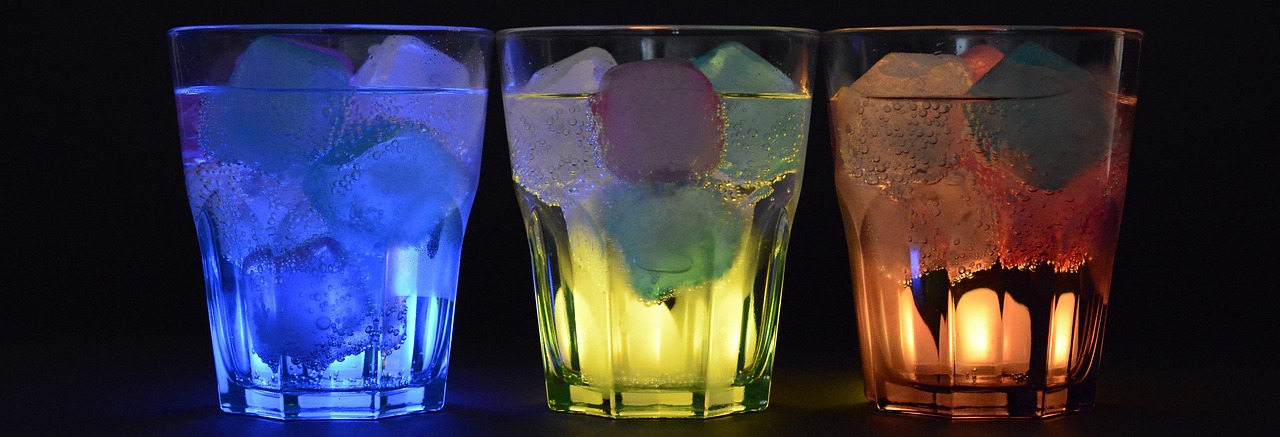Looking for Ideas for Signature Cocktails?
It has become commonplace for most wedding receptions to feature two or more signature cocktails – or signature drinks – as part of the reception’s itinerary. Hosts will sometimes offer special drinks as a welcoming before guests sit for the ceremony, while other times hosts will offer these cocktails throughout the evening.
This article will briefly discuss signature cocktails, current trends at wedding receptions, and hopefully give hosts some ideas to incorporate into their own parties and receptions.
As always, clients are encouraged to check out Top Shelf Bartending’s growing list of signature drinks for inspiration.
What are Signature Cocktails?
Signature cocktails are specialty drinks that are served at wedding receptions – sometimes as a greeting prior to the ceremony, and sometimes immediately following the ceremony to kick off Cocktail Hour.
Oftentimes, signature cocktails are served throughout the evening, or until the ingredients run out. It’s typically at the discretion of the host or the people getting married to determine the timeline on which signature cocktails are served.
Typically, signature cocktails or signature drinks are especially relevant to the two people getting married. It’s quite common, as an example, for the people getting married to name their cocktails after pets, or to reference an inside joke.
What Type of Signature Cocktails Should We Offer?

Top Shelf Bartending recommends that couples offer one base liquor per signature cocktail.
For example, a couple might do a Mojito variation as one of their signature drinks. Mojitos are typically made with white rum, so our suggestions would be to do a vodka, whiskey, or tequila-based cocktail as the other signature drink.
What we can confirm through experience is that the signature drinks will be popular at any wedding reception. Guests who typically do not drink whiskey, for example, will be much more apt to try an Old Fashioned or a Manhattan if it’s the groom’s signature drink.
Given that most wedding receptions feature open bars, a lot of guests feel more confident in trying something that they may not typically order. This is why Top Shelf Bartending suggests that clients over-purchase the ingredients and liquors needed for their signature drinks.
Our last suggestion – and this should be apparent – is that the signature drinks should be cocktails that the two people getting married enjoy. A bride, for example, shouldn’t offer a Moscow Mule variation as a signature cocktail if she prefers vodka and cranberry.
Readers would be surprised how often thoughtful hosts try to defer too much to their guests, even on their own wedding day. We encourage hosts, in this instance, to be a little selfish and go with the drinks and menu that they prefer, rather than trying to appease every guest.
How Many Signature Cocktails Should We Offer?
In our opinion, two is the perfect number for signature drinks – one for each of the people getting married. However, some hosts want to cater to every palate on their guest list, and will want to offer three, five, or even seven signature cocktails.
Going with more than three signature or specialty drinks usually ends up being unwieldy and wasteful. While it’s great that hosts want to have a variety of options for their guests, there comes a point of diminishing returns as it concerns signature drinks.
Top Shelf Bartending helps hosts build out their complete bar menu, including their preferred signature drinks. Some hosts elect to go with a “Limited Liquor” Menu of vodka, whiskey, and rum, while other hosts want to do a full bar with 8-10 different liquor options.
The point being, at an open bar wedding reception, guests will usually be able to find something that they are willing to drink. Hosts – particularly the people getting married – are encouraged to go with their preferences for their signature drinks, rather than trying to find five or more cocktails geared more toward their expected guests.
How Does Top Shelf Bartending Create Signature Drinks?

Hosts will often know exactly what they want for signature drinks. For example, the groom might be a dedicated Jack and Coke drinker, while the bride loves Malibu and Pineapple. Sometimes, the solution is apparent and simple.
Other times, hosts will want Top Shelf Bartending to construct elaborate, memorable cocktails. Some of the cocktails we created for 2022 are available to view on our Signature Cocktails page.
Our process is to start by asking hosts what type of flavors they prefer. For example, some hosts are not big drinkers, and might prefer more obscure flavors such as banana or tangerine. Other people prefer their drinks more or less sweet, or want a cream or coffee-based drink such as an espresso martini.
“Flavoring” is an emerging trend in bartending. For example, Mojitos and Moscow Mules have become very popular cocktails. And better bartending services have taken these cocktails to the next level by incorporating secondary flavors.
One of Top Shelf Bartending’s most popular craft cocktails is the Blackberry Mojito. Blackberry and lime are two highly-complementary flavors, and this combination tends to be extremely popular as a signature-drink option. Blackberry Moscow Mules are similarly popular.
Part of our process is using simple Flavor Wheels to create cocktails. Blackberry, for example, pairs equally well with lemon or lime. Strawberry, by contrast, seems to pair better with lime than lemon. Blueberry pairs poorly with lime and orange, but surprisingly well with lemon.
Here is a basic flavor wheel:

This is a general flavor wheel, and works with a lot of herbs and spices that you would not see at a typical wedding reception bar. But it does serve as a springboard for creating custom cocktails.
More often, we work with fruit flavors that pair together well. It’s common, for example, to pair a berry flavor with a citrus flavor.
But some flavors pair better than others: blueberry and lemon or raspberry and lemon, for instance, tend to pair better while lime works blackberry, cherry, and sometimes strawberry.
Because orange is already fairly sweet, it’s better paired with vanilla or maybe banana. Orange and chocolate or orange and cinnamon wouldn’t be appealing to most palates.
It seems simple, but starting with flavors well-suited to most palates is a big help in creating dynamite specialty drinks.
Batching Drinks
Another topic we discuss with all of our clients is “batching” drinks. As it concerns bartending, this refers to how well a drink can be made in a large quantity.
Mojitos and Old Fashioneds are two cocktails that do not batch particularly well. Mojitos, as an example, tend to get flat and soggy if they sit too long.
When making a fresh Mojito, the mint is muddled before the other ingredients are added, which adds the fresh aromatic notes that most people love about them. “Batching” a Mojito mostly negates this process. Meanwhile, the bubbly club soda tends to flatten out when the mixture sits too long over ice.
Meanwhile, Old Fashioned drinks are intended for whiskey connoisseurs. They are a slightly sweeter version of a whiskey on the rocks. Putting a fine bourbon such as Woodfood Reserve into a batch over ice largely kills the savory flavor of the whiskey.
The syrupy ingredients used in most Old Fashioned Drinks – mainly simple syrup and Luxardo cherries – also tend to settle in a batch, again nullifying what most people tend to enjoy when ordering an Old Fashioned.
For these reasons, drinks that do not batch well are not recommended as signature drinks at most wedding receptions – especially when the expected guest counts are over 100.
While Top Shelf Bartending encourages clients to have these drinks on the bar menu, we recommend that clients maybe choose something that batches a bit better as a signature cocktail option.
Signature Drinks That Batch Well
If drinks like Mojitos and Old Fashioned don’t batch well, what are some options for signature drinks that do?
Here are some multi-ingredient drinks that batch more easily:
- Margarita variations
- Long Island Iced Tea + Electric Lemonade variations
- Blackberry Lemonade
- “Spiked Iced Tea” variations
- Most drinks with fruit juice
These are just a few options. Two-ingredient drinks such as Jack and Coke or Vodka and Cranberry are very easy and fast for professional bartenders to make. Multi-ingredient drinks – meaning those with three or more ingredients – are often batched during Cocktail Hour for speedier service.
As a rule of thumb, “fizzy” drinks – those including club soda, soda pop, or champagne – do not tend to batch well. Most of the time, Top Shelf Bartenders opt to make those drinks individually rather than batch them.
In the same vein, Manhattan and Martini variations do not tend to batch well, with the exception of sweeter Martinis such as Espresso or French Martinis. Manhattans and Martinis are a little more time-consuming to make, but the trade-off in quality is worth the extra effort.
Top Shelf Bartending’s Favorite Five Signature Drinks for 2023
Given everything that you’ve read above, here are five of our favorite cocktails for 2023:
- Vodka – Cranberry Moscow Mule
- Gin – Empress Gin Sidecar or Chelsea Sidecar
- Rum – the Real Rum Runner
- Tequila – Paloma and Paloma Variations
- Whiskey – Apple Crown Variations
We work with every host to come up with the best cocktails to suit every event.
Contract us via our Home Page for some inspiration or a free quote.




Are there any unique or themed cocktail options that can cater to specific cultural backgrounds or preferences, such as incorporating traditional ingredients or flavors from different countries or regions?